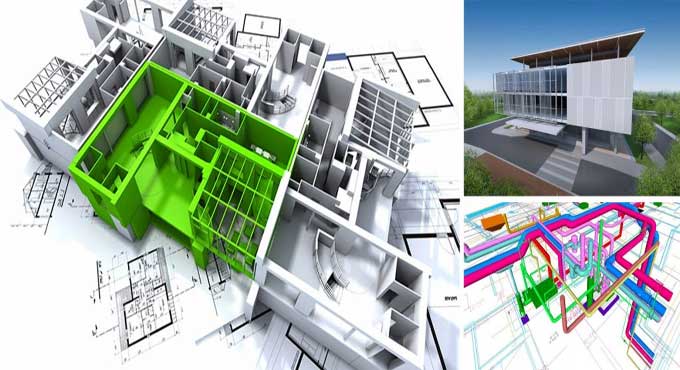BIM vs. Revit: What's the difference?
Tweet
Several individuals frequently lump Revit and BIM together. The debate between Revit and BIM, however, is irrelevant.
Building information modeling (BIM) is a method of intelligent 3D modeling that helps with the initial planning and design of a cflfommercial building or another piece of civil infrastructure, the actual physical construction phase, as well as management following the completion of the project.
The fact that BIM and Revit both aim to create 3D architectural design and modeling is one of the main causes of misconception between them. The digital output connected to both of them is made up of 3D models from different design fields, such as architectural, structural, and MEP.
But do you not believe that they are both the same? Let's explore the fundamental similarities and distinctions between Revit and BIM.
Revit
Autodesk's Revit is a BIM tool providing capabilities for the architectural, mechanical, and electrical, or AEC, industries. A key tool for creating 3D models, which are essential to BIM, is Revit.
While creating BIM, Revit, and several other tools/software are used to assist designers in creating, coordinating, working together, and simulating the integrated design. Revit is one of the media where we may develop and access this information. As we previously stated, BIM gives information.
One of the most popular programs for creating 2D drawings, 3D BIM models, 3D rendering, cost schedules, and collaboration is Revit. Users may obtain building information from the database of the building model and create a building, structure, and its parts in 3D.
BIM
BIM is an intelligent model-based process or methodology that produces 3D building design models with all the information required for a project to be constructed.
It makes it easier for the project's many teams to coordinate and work together. AEC professionals can design, construct, and maintain buildings and infrastructures more effectively.
A change anywhere is a change everywhere is how Autodesk, the creator of BIM software platforms like Revit and AutoCAD, defined the word BIM. This change is immediate and occurs without human participation.
A structure may be "made" before it is realized using a virtual model as a genuine BIM model includes the virtual analogs of the actual building elements and pieces necessary to construct a building.
Difference between the Revit and BIM
A procedure for producing and managing information about a construction project throughout the course of its lifespan is referred to as BIM.
Building information modeling (BIM) entails the creation of a digital model of the building that contains details on its geometry, components, performance traits, and other aspects of its design and construction. BIM can enhance teamwork, lessen mistakes and disputes, and maximize building performance.
On the other side, Revit is a particular BIM software program. It is the creation of Autodesk, a developer of software for architecture, engineering, and construction.
Architects, engineers, and other construction specialists may produce accurate models of buildings and other structures using the 3D modeling software Revit. By supporting BIM processes, the software enables users to organize and distribute data across several disciplines and project phases.
In conclusion, BIM is a method for managing data related to construction projects, and Revit is a program that facilitates BIM processes. Even though Revit is a well-liked BIM tool, BIM processes may also be supported by other software programs.
What is the better option?
Neither Revit nor BIM is superior since they cannot be used interchangeably. Autodesk created the Revit application to support BIM; it does not replace BIM.
For each unique project, BIM must rely on a variety of technologies to collect and store data so that it may be combined and integrated to produce a fully working 3D model.
To get online demonstration, watch the following video tutorial.
Video Source: Balkan Architect
Revit is simply one type of BIM software that designers use to create BIM models, despite the fact that it may be the most widely used platform.
Revit can combine architectural, structural, and mechanical elements into a tremendously data-rich 3D model, and its abilities are well-known across many industries.

Gallery
Feel free to contact us for BIM requirements. One of our representative will respond you within 24 Hours. Send us your projects requirement today and grow your project.
Explore More !







